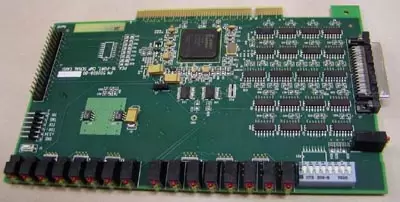A company that makes equipment for the television broadcast industry needed to meet the new RoHS requirements for lead and other toxic materials on their existing circuit. At the same time they wanted to take advantage of new technology to add more capability. Voler was selected to develop a card that provides 16 serial ports and plugs into the PCI bus of a PC.

They could not use an off-the-shelf high-density serial port card, because of special requirements for their serial interface and for compatibility with a large amount of software they owned.
A Field Programmable Gate Array (FPGA), was used to put more functions on the board. The FPGA is configured in software, and its configuration is stored in a Programmable Read Only Memory (PROM) on the board. Unlike a microprocessor, once the software configuration is loaded into the FPGA it operates at high speed as if it were a hard-wired digital circuit.
The FPGA eliminates extra parts by providing the interface to the PCI bus, the 16 serial Universal Asynchronous Receiver Transmitters (UARTs) which are the heart of the serial ports, and a lot of interface circuitry. In the past at least 20 ICs would have been needed to do the functions of the FPGA.

